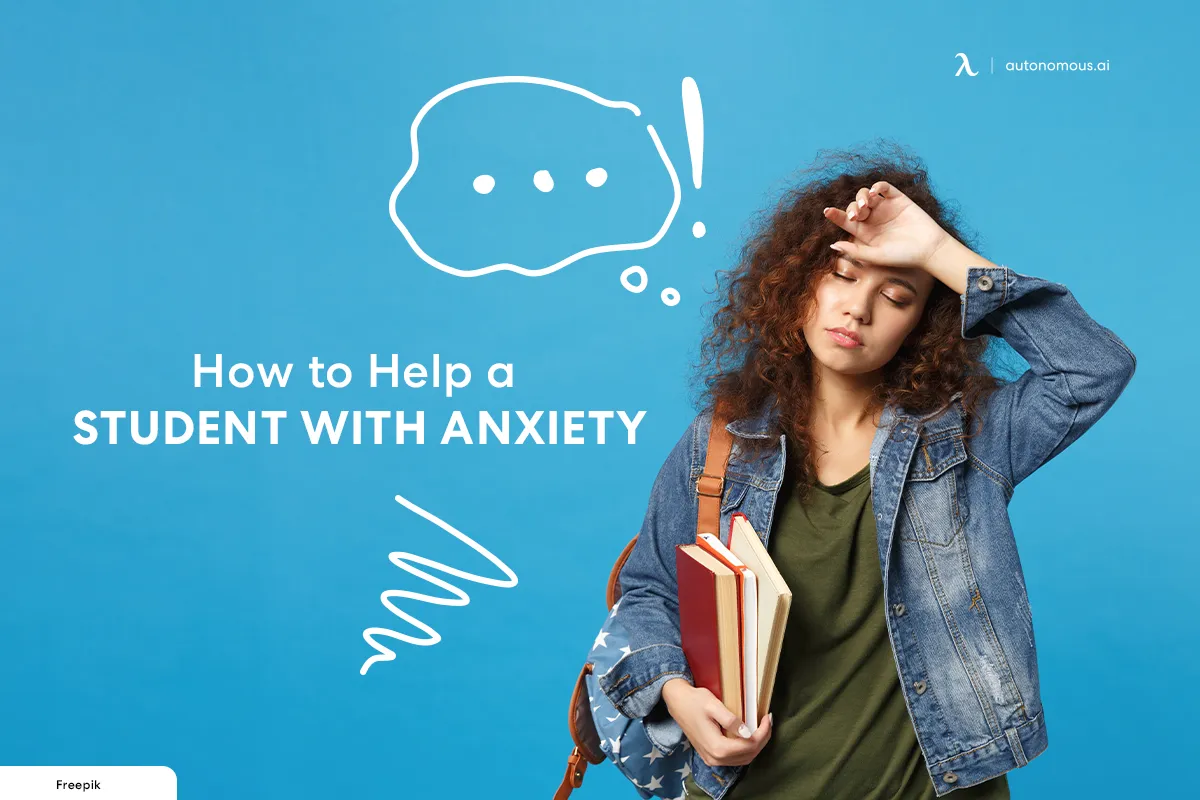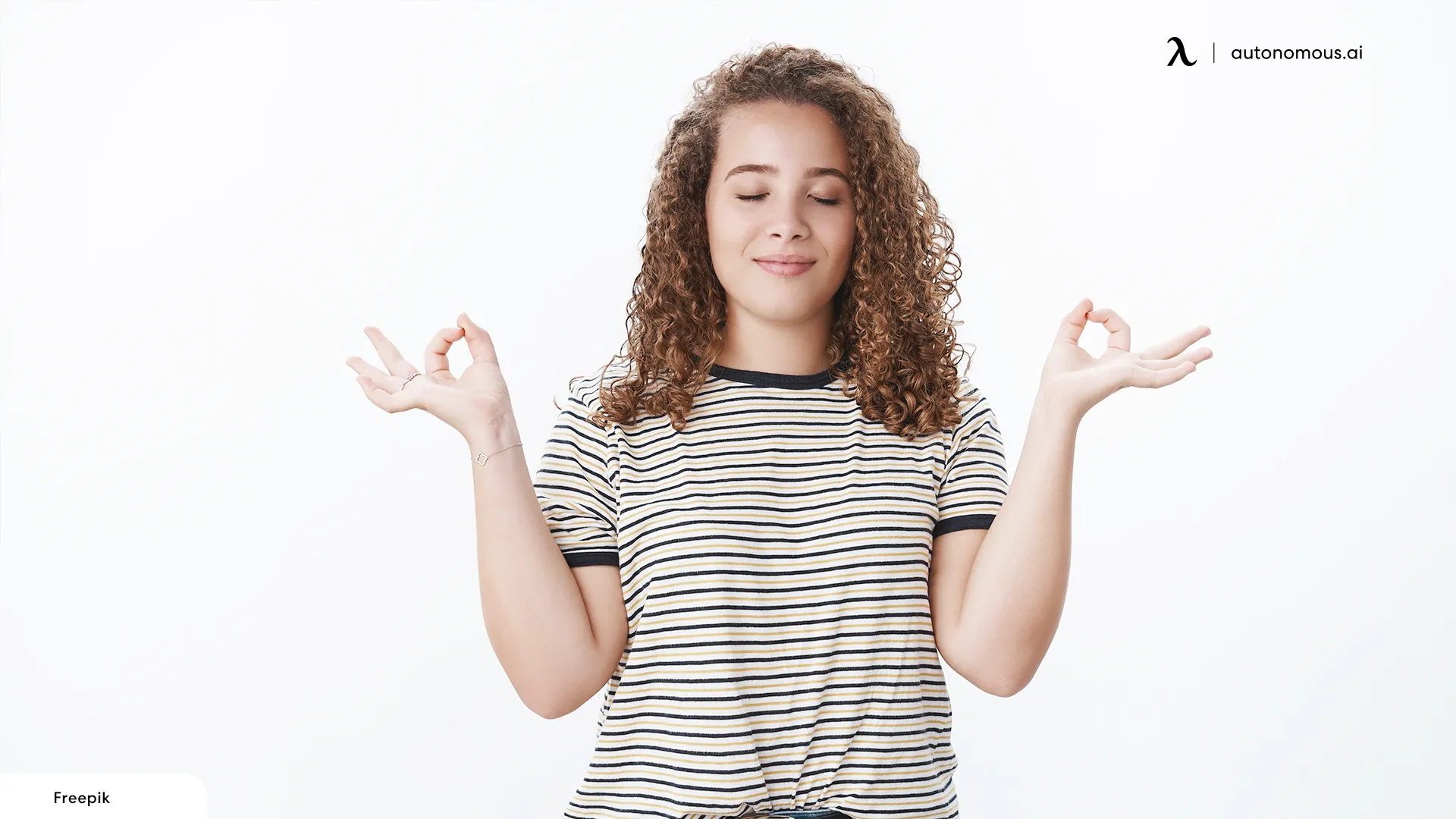
According to various researches and surveys carried out throughout the years, it is estimated that 40% of college students suffer from anxiety and restlessness in their educational life. These alarming stats prove that the mental health of college students is on the verge of rising harmfully and hence is a serious concern. Though the reasons for a student with anxiety range from personal to institutional, numerous factors can result in student anxiety and depression.
While eliminating the causes of anxiety in students is a straightforward answer, it isn't as simple as it sounds. Hence educational institutes should take up the responsibility of fostering healthy study environments in which students can feel welcome and mentally relaxed rather than being subjected to severe mental stress. This article will cover some easy-to-practice ideas to manage anxiety in elementary students and encourage a healthy classroom environment.
How To Help A Student With Anxiety?
Here are some ways to help students with anxiety.
Identify the Mood

Before proceeding with solutions, it is first important to identify your feelings for the day. Using a mood meter, educators can regularly check in with their students. This might be more suitable for younger kids whose vocabulary for emotions other than grief, rage, or joy is still growing. Using mood meters, children can express various feelings, such as boredom and tranquility.
A red zone on the mood meter denotes a terrible mood, and a green zone denotes an acceptable mood. These may signal the teacher to make time for the student and discuss the next steps.
Encourage Healthy Practices
You will not feel healthy if you are unhealthy; this simple phrase is meaningful on several levels. Our mental health isn't just affected by external factors; the phrase " you are what you eat " is true. Hence it is important to form a healthy interior to present a healthy exterior.
Students should be encouraged to lead a healthy lifestyle that includes a properly nutritious diet. One of the most common causes of anxiety in students is their lack of energy to deal with daily challenges. And without a proper meal and nutrition, your brain cannot get enough energy to deal with the challenges. Lack of proper diet shows up as poor heart health, low blood pressure, harmful blood sugar levels, and vibrations of the heart, a common symptom of anxiety.
Deep Breathing

An activity that involves deep breathing can be quite beneficial when you detect that one or more of your students are feeling anxious. Daily deep breathing, especially while children are quiet, aids in teaching them to regulate their breathing. The breathing process can be slowed down to help the brain relax. When pupils are concerned, deep breathing exercises can lower their heart rates and help them control their body's reaction to their emotions of unease.
Exercise
If you are not sold about the benefits of exercise, then you probably haven't exercised the right way. Exercising is a proven and research-backed way to combat stress in kids, adults, and every living being.
Students should have a proper exercise routine in their daily life, so their stress levels are controlled and physical health issues are minimized. Even though it might seem tough to incorporate exercise with assignments and exams, you can always work out with an indoor cycling bike or a foldable walking treadmill. From seated stretches to easy standing exercises, there are many ways to release those happy hormones in your body.
Involve the Parents

In some cases, the cause and reasons for anxiety emerge from the home rather than school. Hence both parents and teachers need to participate and identify those triggers actively. Promote conversations about social and emotional learning at home and in the classroom.
To support kids in both environments, educators can collaborate with parents. This could be achieved by determining the cause of the anxiety, figuring out what academic and behavioral needs a student has, creating objectives and putting anxiety management techniques into practice at home and school, and tracking the student's development over time.
Take A Break
An anxious mind might also be calmed by being outside. Sometimes all it takes to make a difference is a change of environment. A hyperactive worrier can also be calmed by breathing in the cool air or taking the time to notice birds chirping. Students can shift their attention from their problems to something more concrete by being asked to investigate their surroundings attentively. This simple exercise helps greatly in relaxing the mind and easing the tension.
Communicate

As much as teachers are asked to encourage students to communicate openly about their anxiety, it is also highly important for students to be willing to communicate. Teach your students that there is nothing to be ashamed about being anxious, and open communication opens up chances to resolve matters which can otherwise grow into serious unhealthy results.
Don't Ignore the Comfort
You are reclining in your bed trying to prepare for the test and then get frustrated about not being able to memorize a single word. While your brain could be all up for the challenge, your body's physical restlessness might pose a hindrance. Comfort when studying is highly important and should not be ignored at any cost.
Make sure you have a proper elementary school desk and an ergonomic chair. Standing desks are popular for students as they allow you to work and study in healthy postures. If the cost of a study setup at home is too high, you can always check out the office furniture for sale because it is designed with a high level of comfort.
Practicing Gratitude
While the brain may generate happy ideas from gratitude, it cannot generate worried thoughts. Sometimes anxiousness can be stopped if you can start a good thought process. A teacher should encourage children to keep gratitude notebooks and ask them daily to write down at least one thing they are grateful for. And reading those encouraging passages about their lives again aids in replacing negative ideas with encouraging ones.
Conclusion
The body's natural reaction to stress is anxiety, which everyone experiences occasionally, including youngsters. It takes the shape of anxiety or concern and refers to a sensation of fear, unease, or trepidation about what lies ahead. Anxiety is an understandable and frequent response to change or a distressing experience.
Anxious children could be clinging, crying or throwing tantrums, startle easily, sleep badly, or even get headaches or stomach aches. Children occasionally experience anxiety or worry, including when they start school or relocate to a new community. Parents and teachers can work together to help youngsters feel less anxious while experiencing it.
Subscribe for a 10% discount on your first order.
Sign up for our weekly update and be the first to know about our specials & promotions.
Verbreiten Sie es weiter


/https://storage.googleapis.com/s3-autonomous-upgrade-3/production/ecm/240417/april-10-off-offer-2024-1920x540-CTA.jpg)
/https://storage.googleapis.com/s3-autonomous-upgrade-3/production/ecm/240417/april-10-off-offer-2024-720x1200-CTA.jpg)
/https://storage.googleapis.com/s3-autonomous-upgrade-3/production/ecm/240415/bulk-order-apr-2024-offer-720x1200-CTA-min.jpg)
/https://storage.googleapis.com/s3-autonomous-upgrade-3/production/ecm/240415/pod-offer-apr-2024-720x1200-CTA.jpg)
/https://storage.googleapis.com/s3-autonomous-upgrade-3/static/upload/images/new_post_author/admin-1.png)